Parable Studio’s redesign of Crystal Jade Palace draws from the spatial narrative of the restaurant’s namesake while bridging past and present.

August 23rd, 2019
Parable Studio’s recent renovation of the Crystal Jade Palace restaurant in Takashimaya Shopping Centre, Ngee Ann City is the antithesis of its former self. Gone are the tropes of conventional Chinese fine dining such as dark woods, auspicious crimson shades and elaborate ornamentation with traditional motifs. Instead, the space is lightened up with pastel and earth tones, and accented with timber and brass.
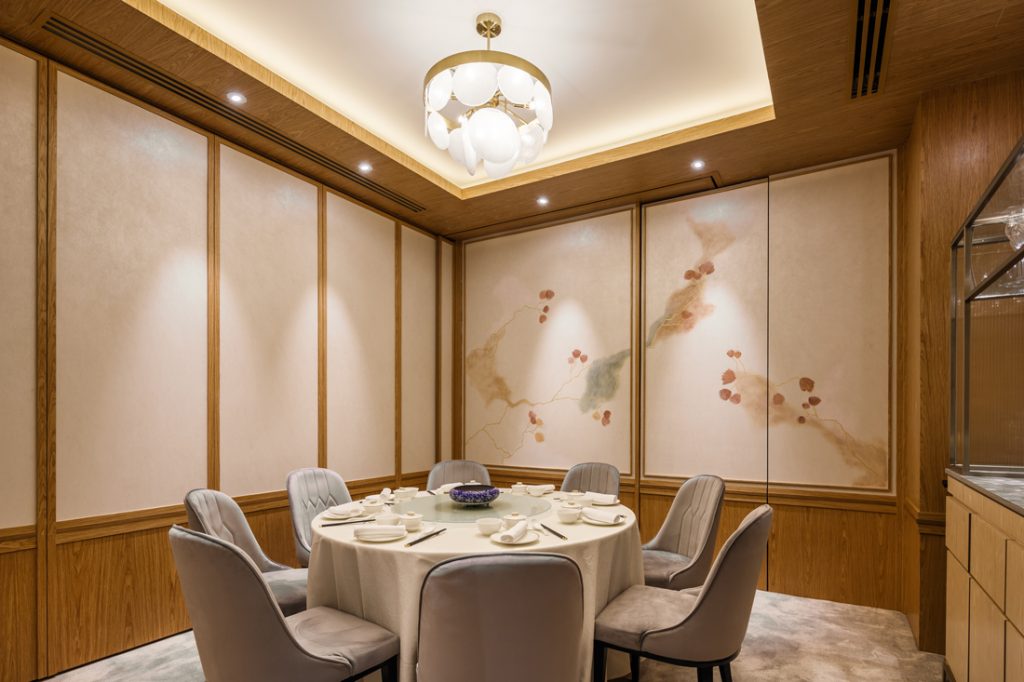
This project sets the benchmark for an invigoration of the Crystal Jade Palace brand. Grounding this aesthetic were discussions on how to enhance and personalise the dining experience through clear design narratives, while bridging tradition and modernity.

The aim was to create a welcoming setting for a younger generation of patrons. At the same time, the new design was not to lose sight of the original intention to make accessible high-quality Cantonese cuisine.
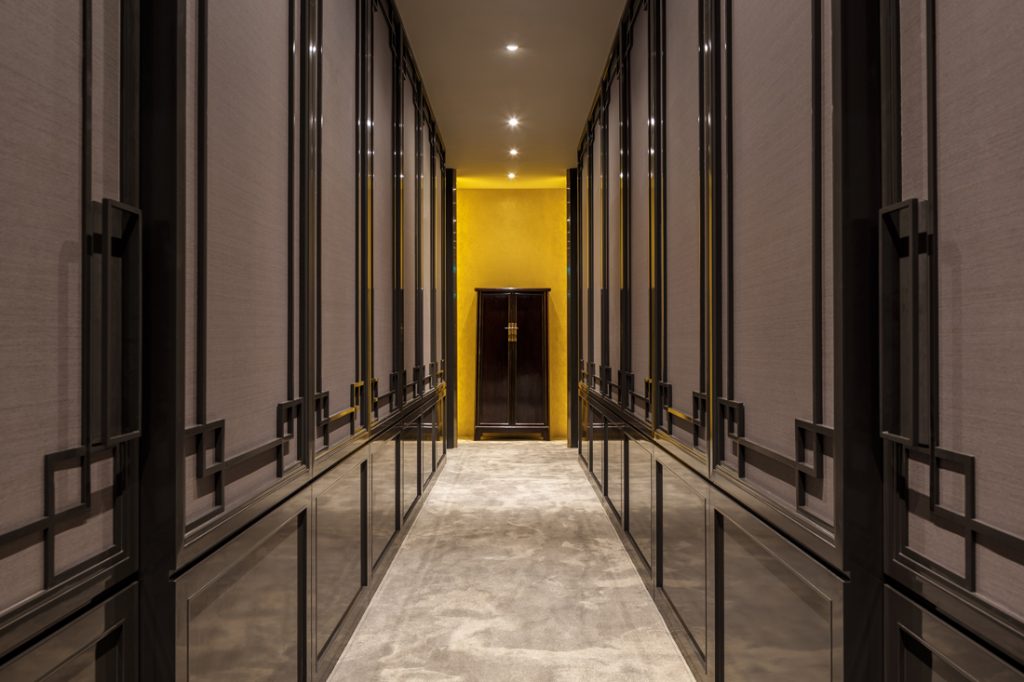
“The biggest difference to the programming was to relate the feeling of moving through a real Chinese palace, and consider how the cuisine would help to be part of this experience rather than just exist in a cool place,” says Ken Yuktasevi, Parable Studio’s founder and Creative Director. This translates to a more amiable palette as well as a defined sequence of spaces – like in an imperial household.
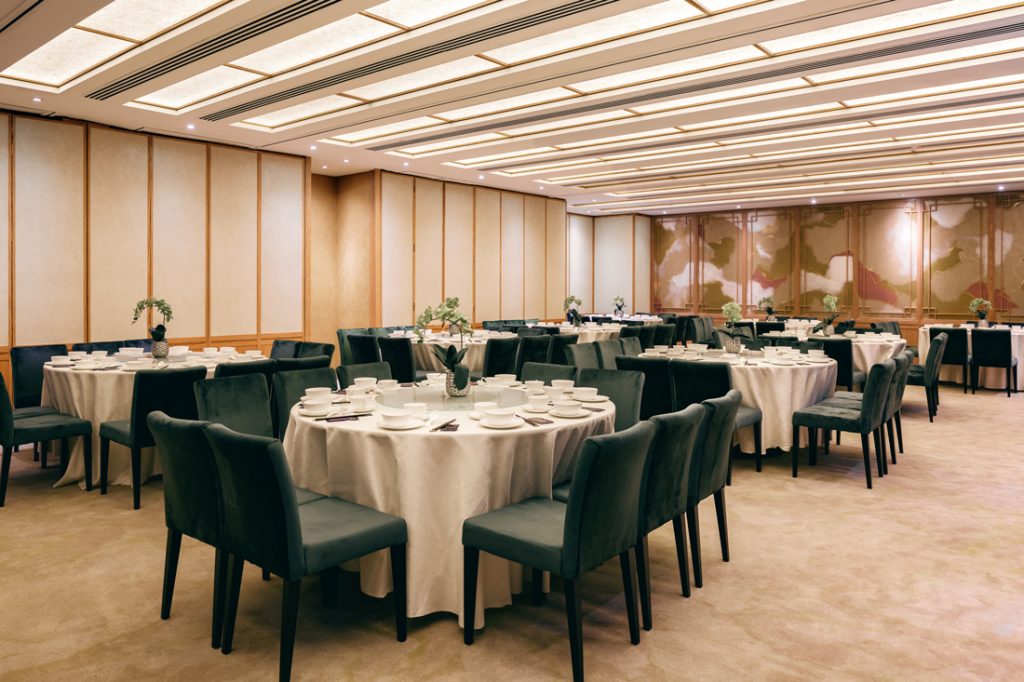
While customers previously entered straight into the banquet hall, Yuktasevi has engineered a sense of arrival with a foyer labelled the Gatehouse. “This is further accentuated by putting up brass semi-opaque screens to give the feeling of containment and invitation from the inside to out,” he highlights.
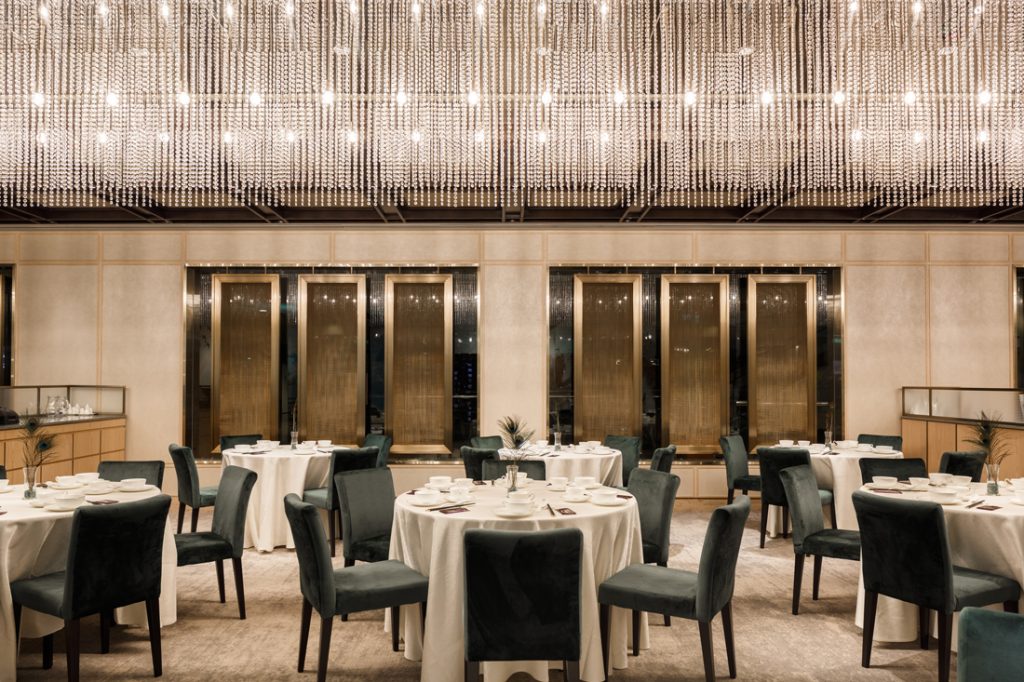
This screening motif takes a page from traditional Chinese architecture, as does a rotund doorway framing an intimate seating section dubbed the Courtyard (top image). Here, banquette seating creates a more approachable and casual atmosphere that reduces the stiffness associated with fine dining. A wall of Chinese concrete roof tiles appropriated into an abstract mural is a fitting accompaniment.
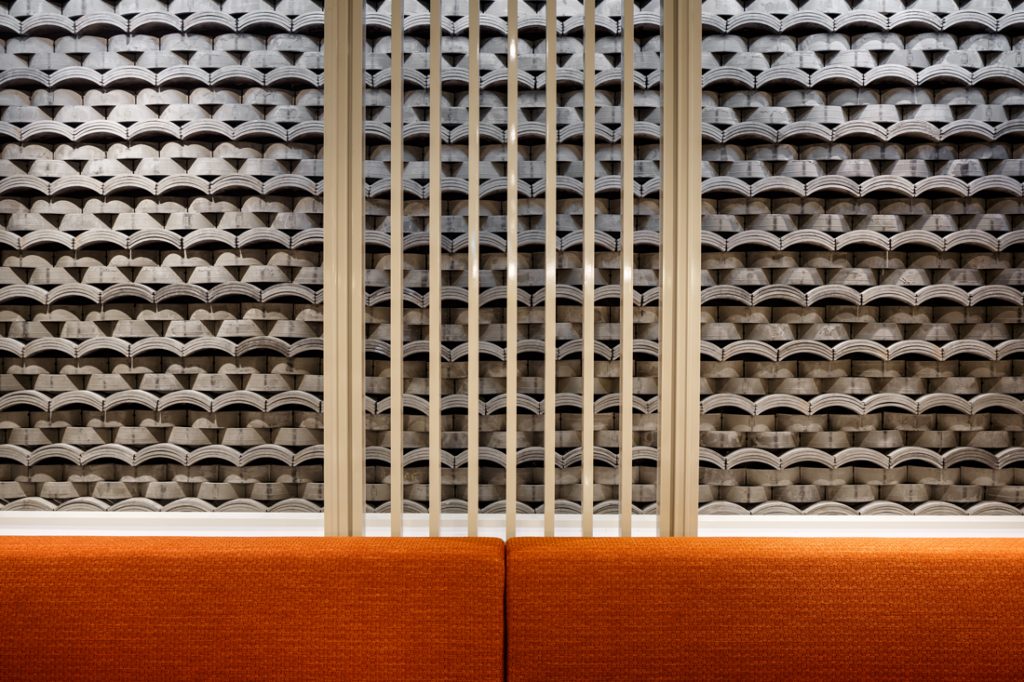
“The creation of different types of spaces like the Courtyard gives way to different seating designs and layouts. The idea is for customers to want to find their favourite spots,” explains Yuktasevi. Similarly, private rooms are dressed in a variety of timbers and artworks to accord customers with a sense of discovery as they select a desired room.
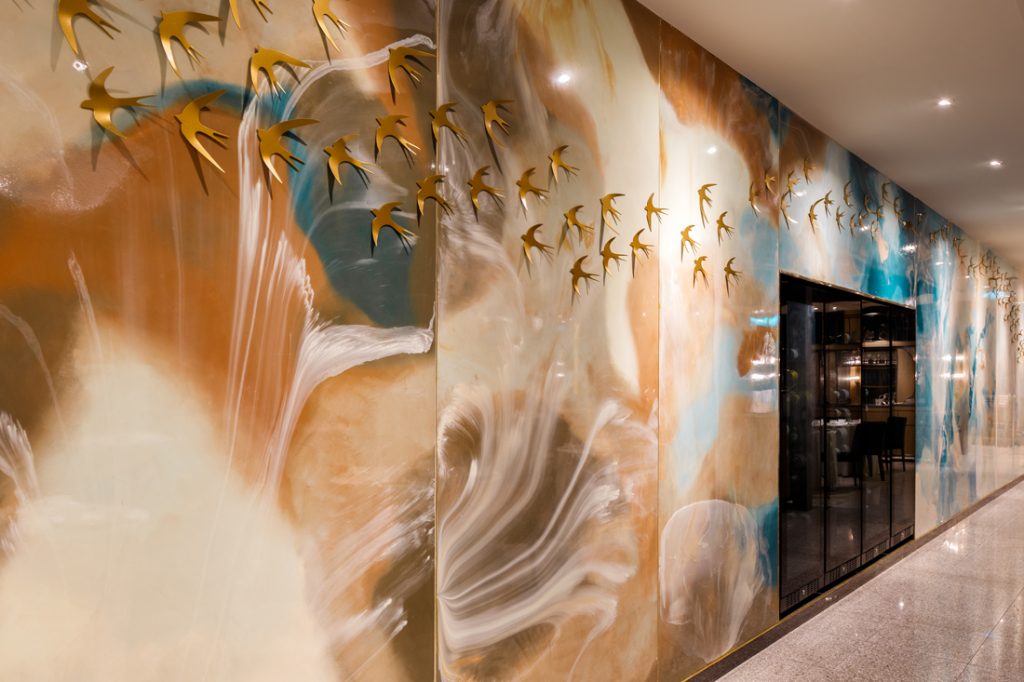
A notable feature is a customised mural by local artist Sam Auditeur wrapping the main dining space with a fluid play of swirls. Brass swallows sweeping across the wall (as if in migratory motion) represent continuity and community, which are important concepts in Chinese culture.
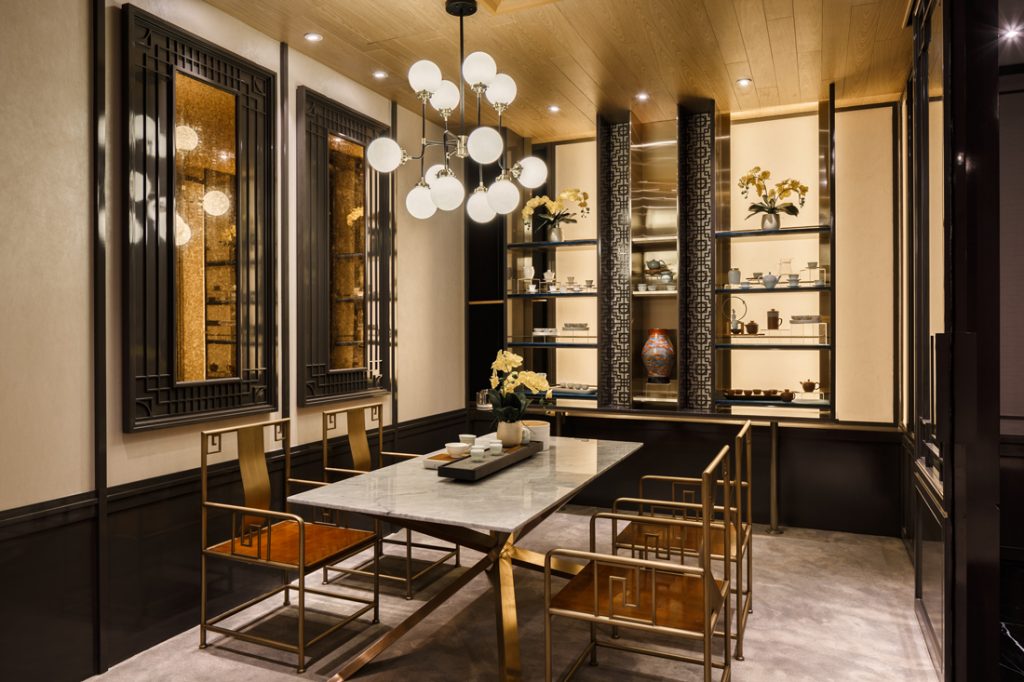
The recycling of components from the original space also mirrors the melding old and new. For instance, frames that formerly clad the restaurant’s exterior have been resurrected as decorative square frames and updated with brass motifs. In addition, a new Tea Room invites customers to celebrate and partake in the age-old tradition of drinking tea as both social practice and cultural art.
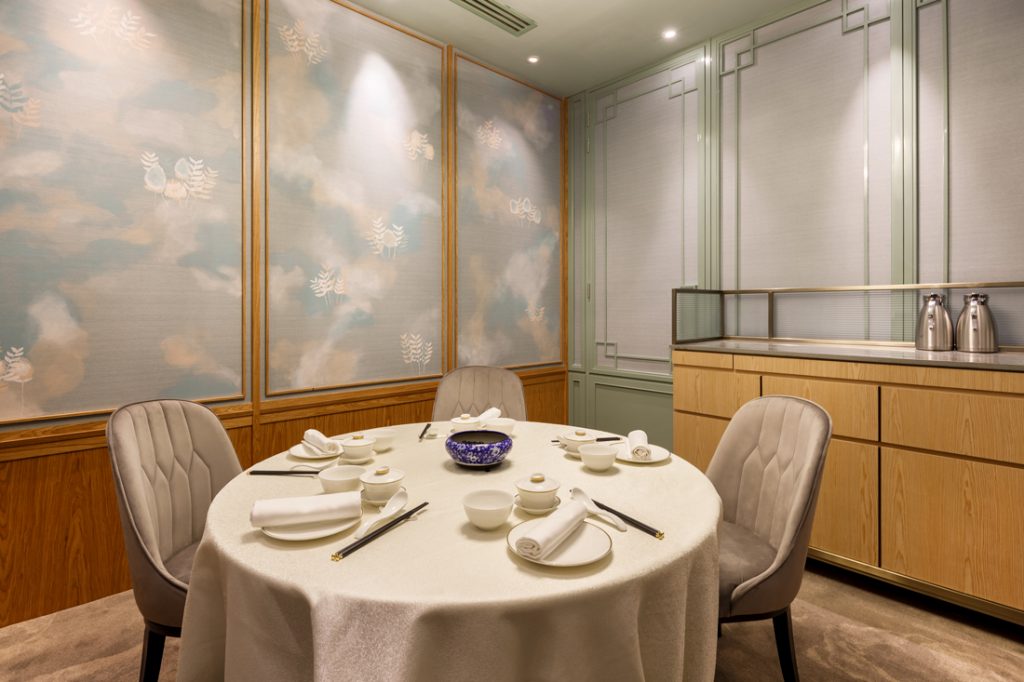
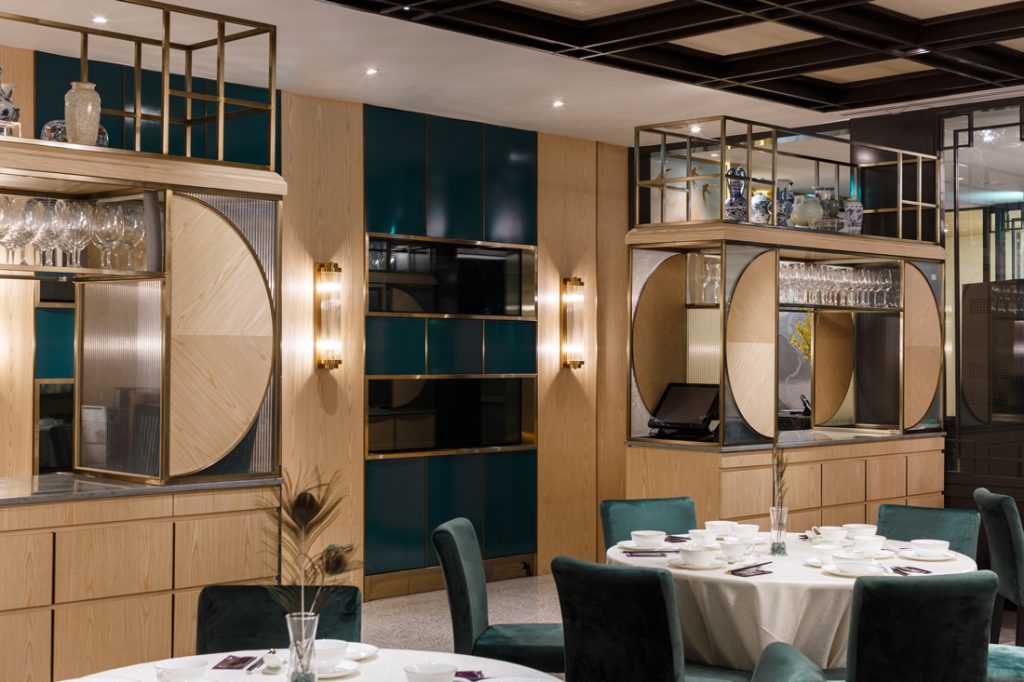
For Yuktasevi, these gestures are important in forming a holistic narrative for the gourmand experience. “I’ve always defined luxury as something that is rarely found. In the world of Asian fine dining, I would say that is authenticity, a focused point of view, a personalised spatial mindset, detailing, and [promoting connections] with family and friends. So instead of simply going darker and heavier or lighter, we thought we would saturate [the experience] with a story.”
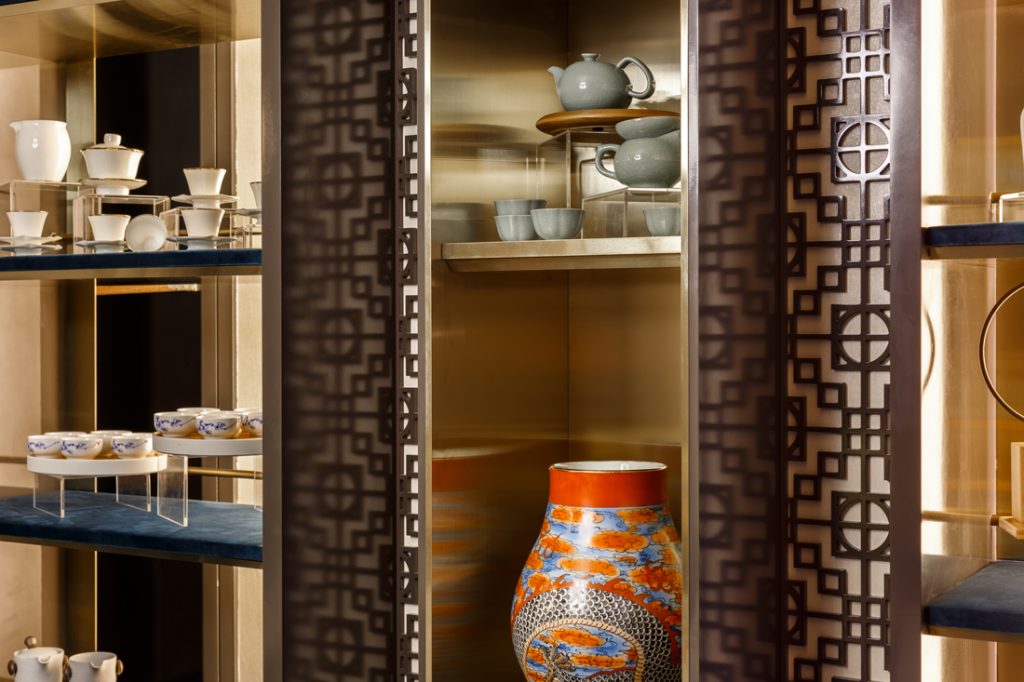
Interior decorative lighting: Genesis Lighting
Furniture: Custom
INDESIGN is on instagram
Follow @indesignlive
A searchable and comprehensive guide for specifying leading products and their suppliers
Keep up to date with the latest and greatest from our industry BFF's!
The new range features slabs with warm, earthy palettes that lend a sense of organic luxury to every space.

London-based design duo Raw Edges have joined forces with Established & Sons and Tongue & Groove to introduce Wall to Wall – a hand-stained, “living collection” that transforms parquet flooring into a canvas of colour, pattern, and possibility.
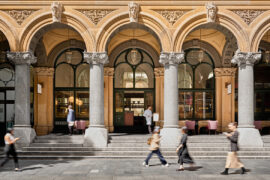
Luchetti Krelle’s timeless design at Epula marries heritage grandeur with classic sophistication, celebrating the spirit of a European piazza whilst remaining unmistakably of its place.

Buchan weaves heritage and contemporary retail across a 3,600sqm site featuring dual-branded hotels, arcades and revitalised laneways.
The internet never sleeps! Here's the stuff you might have missed

BVN’s Sirius Redevelopment has been named one of two joint winners of The Building category at the INDE.Awards 2025. Celebrated alongside Central Station by Woods Bagot and John McAslan + Partners, the project reimagines an iconic Brutalist landmark through a design approach that retains heritage while creating a vibrant, sustainable future for Sydney.

With a date now set for January 2026, Sydney’s landmark project is taking shape as a significant and welcome addition to civic life in the city.